What makes a book compelling? Join me in developing our “Eyes and Ears” for finding compelling stories.
Feel free to disagree, but foosball is a ridiculous game. Waste of time. It’s because the direction of play is side-to-side and the players stand out of bounds and above the table. It’s not that I’m bad at foosball, it’s that I’ve never wanted to get better. Now that I’m a writer, I realize the point of view, the narrative distance, is too great to hold my interest.
When a kids’ camp asked for help in fabricating a human foosball court, the group of guys that kindly allow me to hang with them said, “Sure, we’ll do it.” Nestled inside a bend of a shallow river, cliffs on the other side, the camp allows kids to be outdoors with friends, to find themselves and their place in the world. The underfunded camp charges modest fees and never turns away a camper who can’t afford it. The thinly-stretched, full-time staff captured our hearts and we try to assist as we can.
Not that we’d heard of human foosball. No problem, the camp provided the plans. We had to build a pen, a corral large enough to hold a dozen players kicking a ball into a goal at either end. Imagine mini-soccer, but crowded.
Human foosball is a phenomenon. Can’t say if it’s a huge phenom or a tiny one. Some build the corral from stacked hay bales. Others use wood fences, or walls of vertical wood pallets.
Our plans called for a metal corral. I don’t do much metal fabrication but enjoy learning. Even if the hard way, like the time I burned the wahama out of my bare hand when I touched the far end of a welded part I thought had cooled. Kept ice on it for hours.
Kris, who knows a lot about metalwork, heavy equipment and shares not just the name but the generosity of Santa, remarked the corral was overengineered. We were to use 3 inch by 3 inch metal tubes, material so heavy, it takes two to lift a length.
We spent part of a day at the shop of another generous friend, Larry, cutting the tubes to length, grinding the sharp edges, and trimming the heavy-duty hog panels, a stiff wire mesh meant to contain ticked-off feral hogs weighing hundreds of pounds.
Larry arranged for welders to fabricate the rectangular sides of the corral.
Pieces in hand, we met at the camp. Before we started working, I talked my friends into serving as hand models for a potential cover shot for my book The Barbed Wire Entrepreneurs, forthcoming from Texas A&M Press. The book focuses on the rough and tumble early days of inventing and manufacturing barbed wire, where everybody wanted a piece of the action. My goal was to capture that in one picture.
My friends went along with it, although at times the photo shoot resembled herding cats. The things we do to create art.
We unloaded the heavy welded panels. We aligned them and drilled holes to bolt together. Larry had already drilled some holes in his shop, which helped because field drilling through metal is physical work. The spinning bit sits on the metal, ever so slowly biting into the material. Jimmy manhandled the drill. Despite wearing gloves, he took some skin off the back of a hand against the hog panels.
Naturally, our thoughts returned to PVC plastic, and how nice it would have been to work with PVC, which drills like butter. A lady from the camp came over and I asked her if kids really play human foosball. My thinking was not only was this thing overengineered, but it had the makings of a fad. Play today, empty corral tomorrow. She said her own kids loved it, but she only had experience with PVC. Hah! Someone to reaffirm our own thoughts.
The upper ends of the hog panels protruded as sharp-edged snags. Several of us ground them down. Scott sent a shower of burning grit my way. He discovered how annoying he was and adjusted on the fly. I thought I did a good job for a grinding novice until I saw Jimmy’s work. I went back over my section a second time.
We drilled holes on the top of the panels. I’da thought drilling with gravity would be easier than drilling sideways, but it was harder, and soon, despite Jimmy/Kris helping by putting weight on the bit to push it through, I was worn out, arms shaking. I asked Charlie, one of the camp staff assisting us, if he’d played. Because there’s nothing more reaffirming than having two people agree that PVC was the way to go. He said not only was it fun, the opposing team told him, “Ya’ll came to play, didn’t you.” I’d get no PVC vote from Charlie.
We laid casing pipe, the small stuff used in oil wells, on top, spanning side to side. Unlike flexible PVC, casing pipe is stiff and takes two to lift. Every component in this corral took two or more guys to lift, slide, shimmy, pry, clamp, and bolt. Charlie had fabricated PVC sleeves, painted with team orange and blue for the players to grab. We threaded the pipe through and secured each end. As we slowly drilled, fitted, and secured the cross-pipes, I mentioned we needed to break the corral in after we finished. Don tossed in a shiny new soccer ball. I kicked it out of the way to avoid tripping.
The other crews from our group, all friends, came by to gawk, breaking from their tree-trimming, sawing, dirt work and other jobs the short-staffed camp needed done. They’d stopped on their way to the cafeteria. They said, “No need to hurry because a couple hundred kids are lined up for lunch.” Indeed, the camp seemed to fill during the morning.
We finished drilling the last hole, laying the last pipe, tightening the last U-bolt and broke for lunch. The cafeteria was close, the walk long from oncoming stiffness in muscles we writers who are proficient at keyboards rarely use. We ate camp food, designed to feed many mouths quickly and sauntered out again, determined to wrap it up. I mentioned the corral was near ready for us to break it in. As our creation came into view, we discovered the other crews were already breaking it in for us. Our friends hadn’t asked us for permission.
Mayo, the guy who put the trip and projects together, inexplicitly played on a team of two against five. The odds seemed unfair so I joined in, weaving among the players, ducking under pipe stout enough to raise a welt to a forehead. Opposing players stood only a few feet in front, hands on their colored segments, and a few feet in back.
Just like table foosball, the ball zips in the small spaces, with point blank kicks, carom shots off the sides. I didn’t know the rules, but heard them explained on the fly, “You have to keep both hands on your color.” Unlike table foosball, there is no narrative distance, players are immersed in the action. The stiff hog wire led to faster caroms, the cross pipes of oil well casing provided support for swinging under to extend leg reach.
In a game where score wasn’t kept, of three against five, Mayo, Bob, the guy I drove to the camp with, and I came to play.
Human foosball’s a total blast and I’m glad we didn’t make it out of wimpy PVC.
All the Best,
Geoff
If you enjoyed this post, please hit the heart “❤️” so others can find it. It’s at the bottom and at the top.

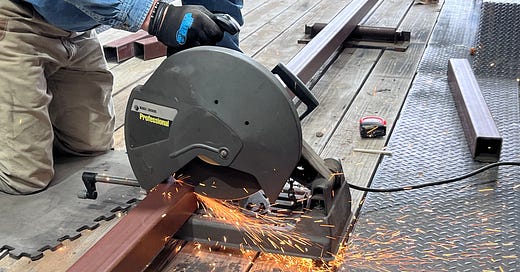


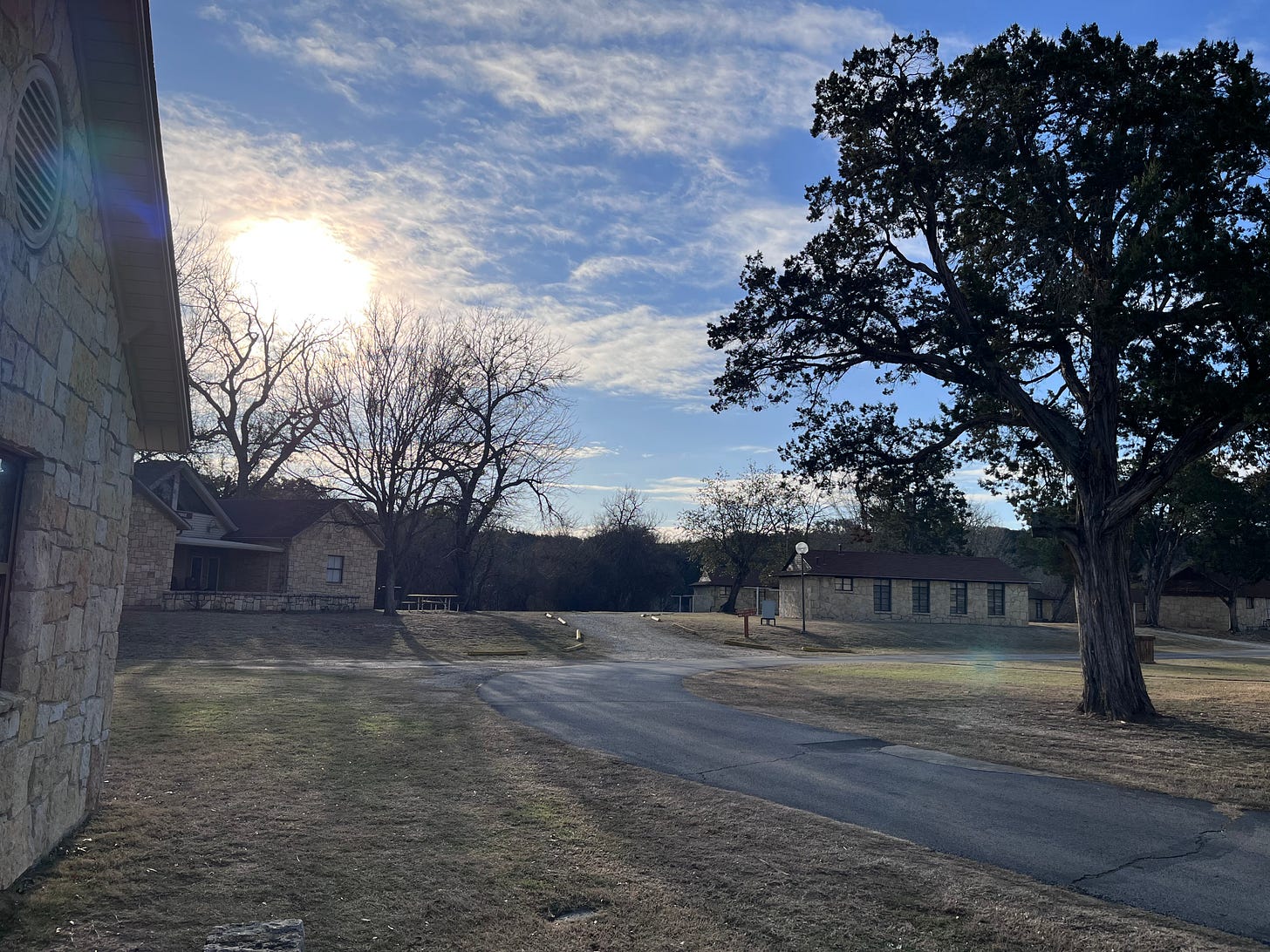
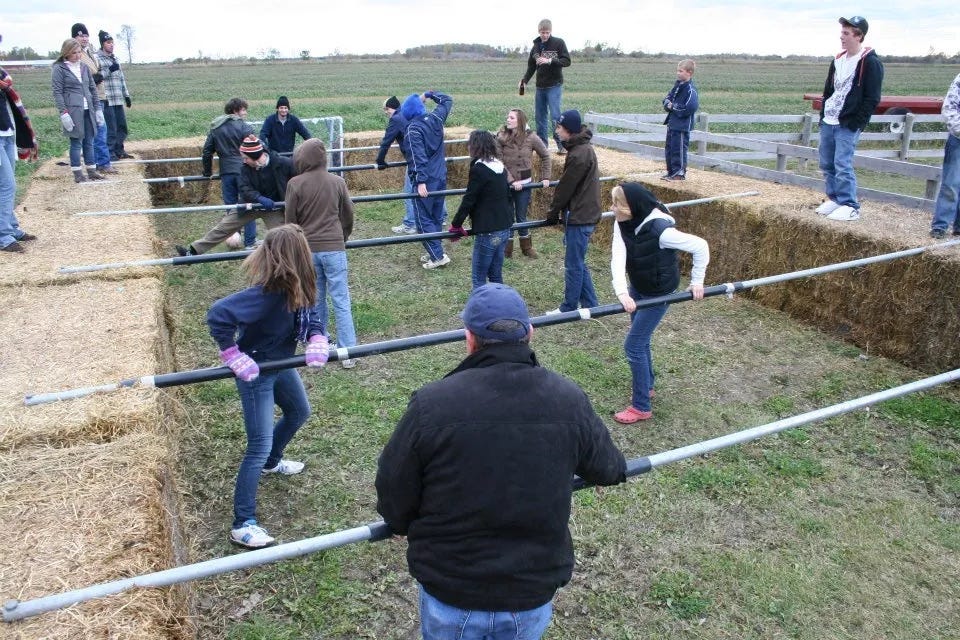
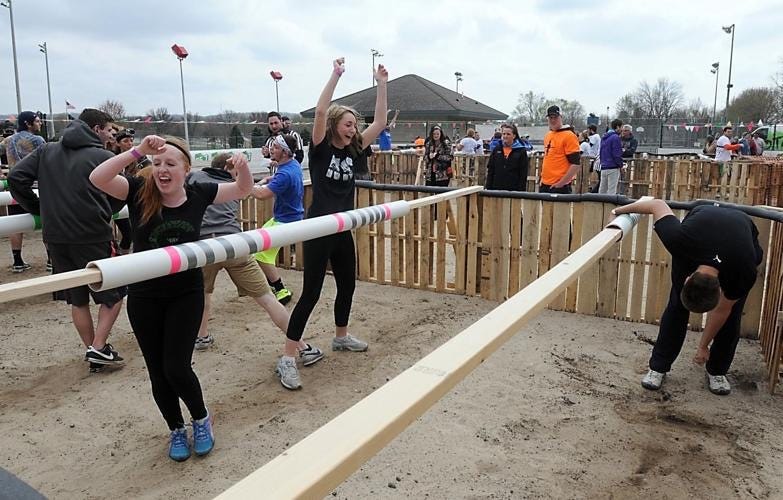
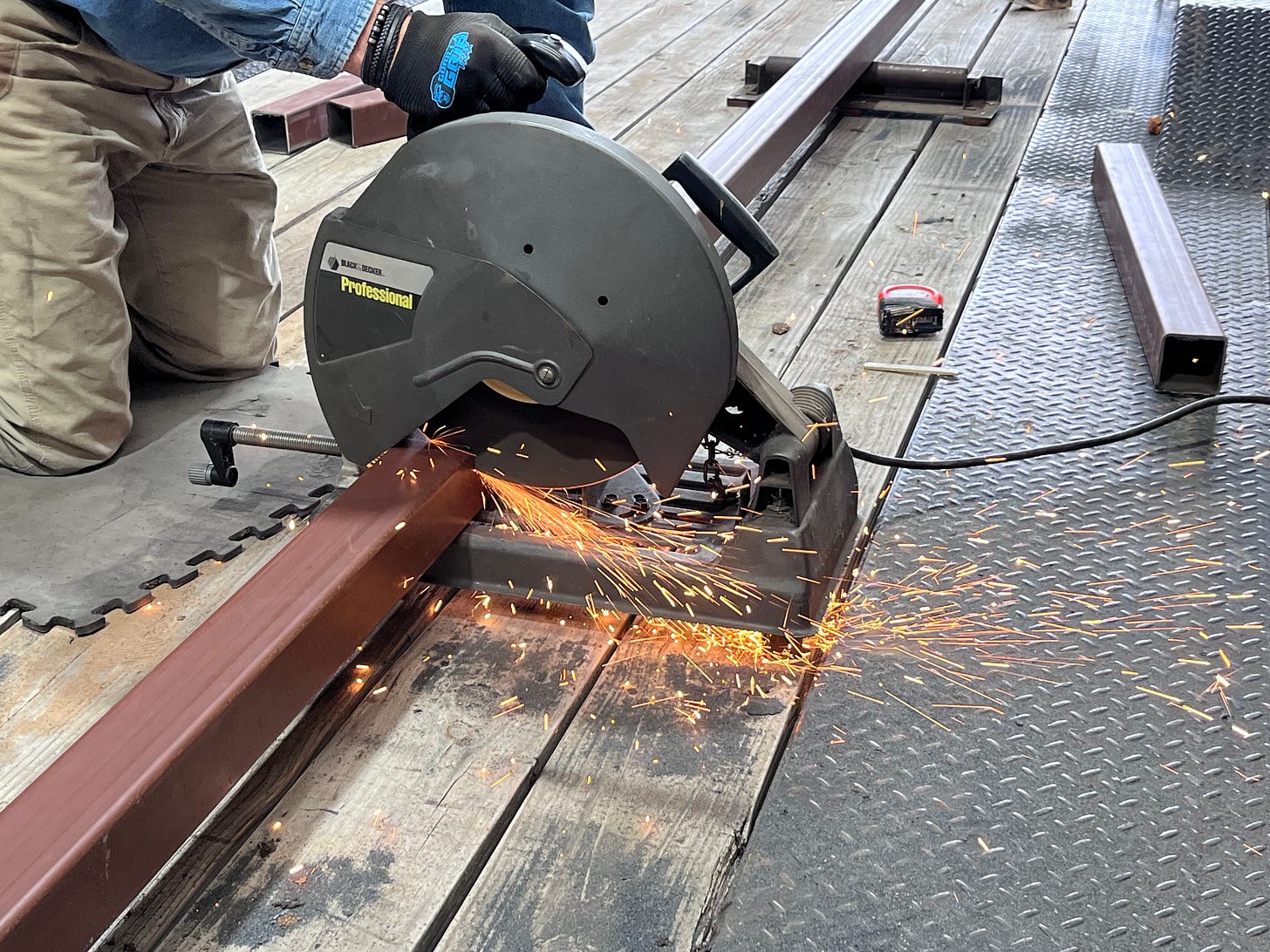
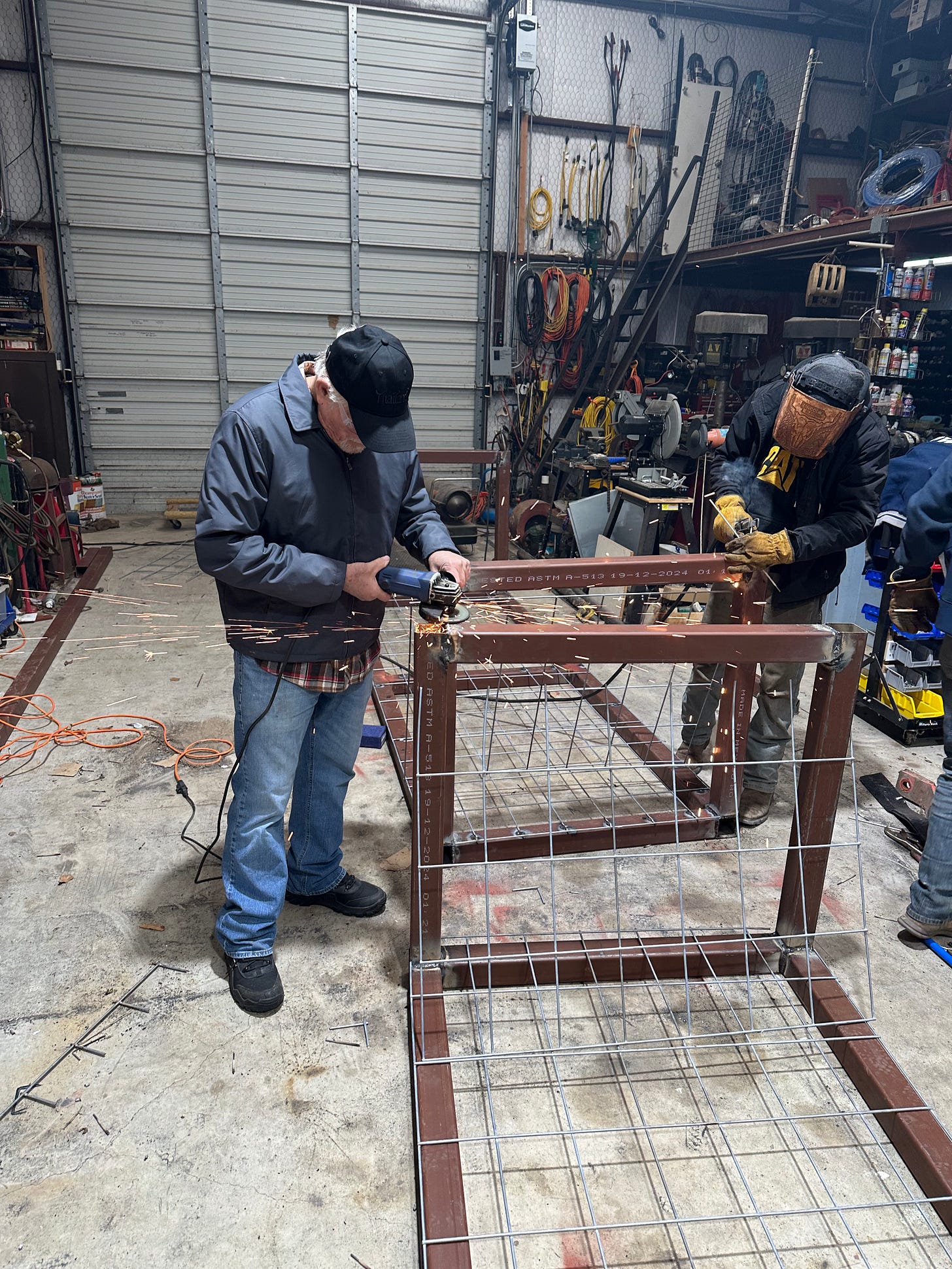

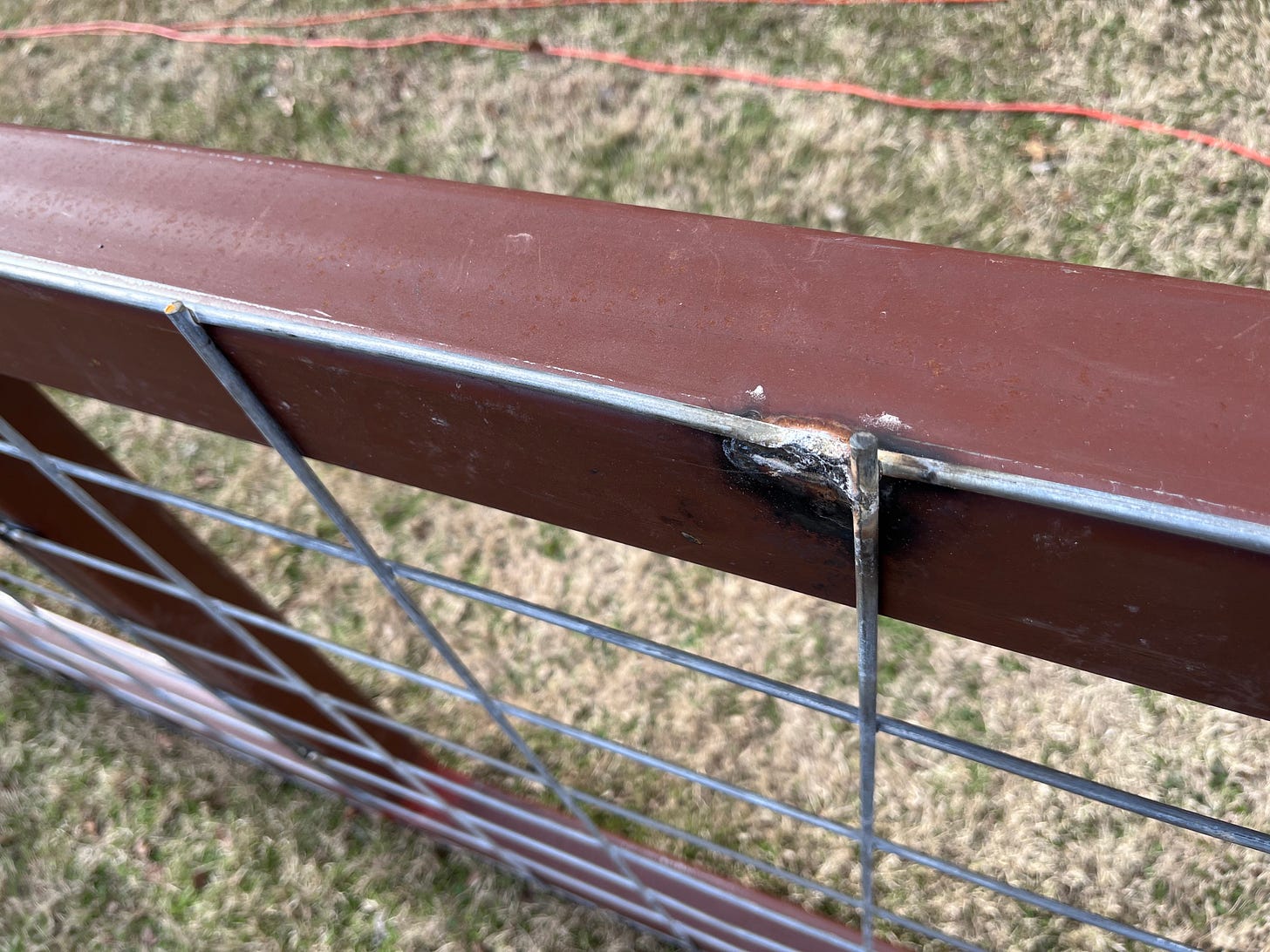
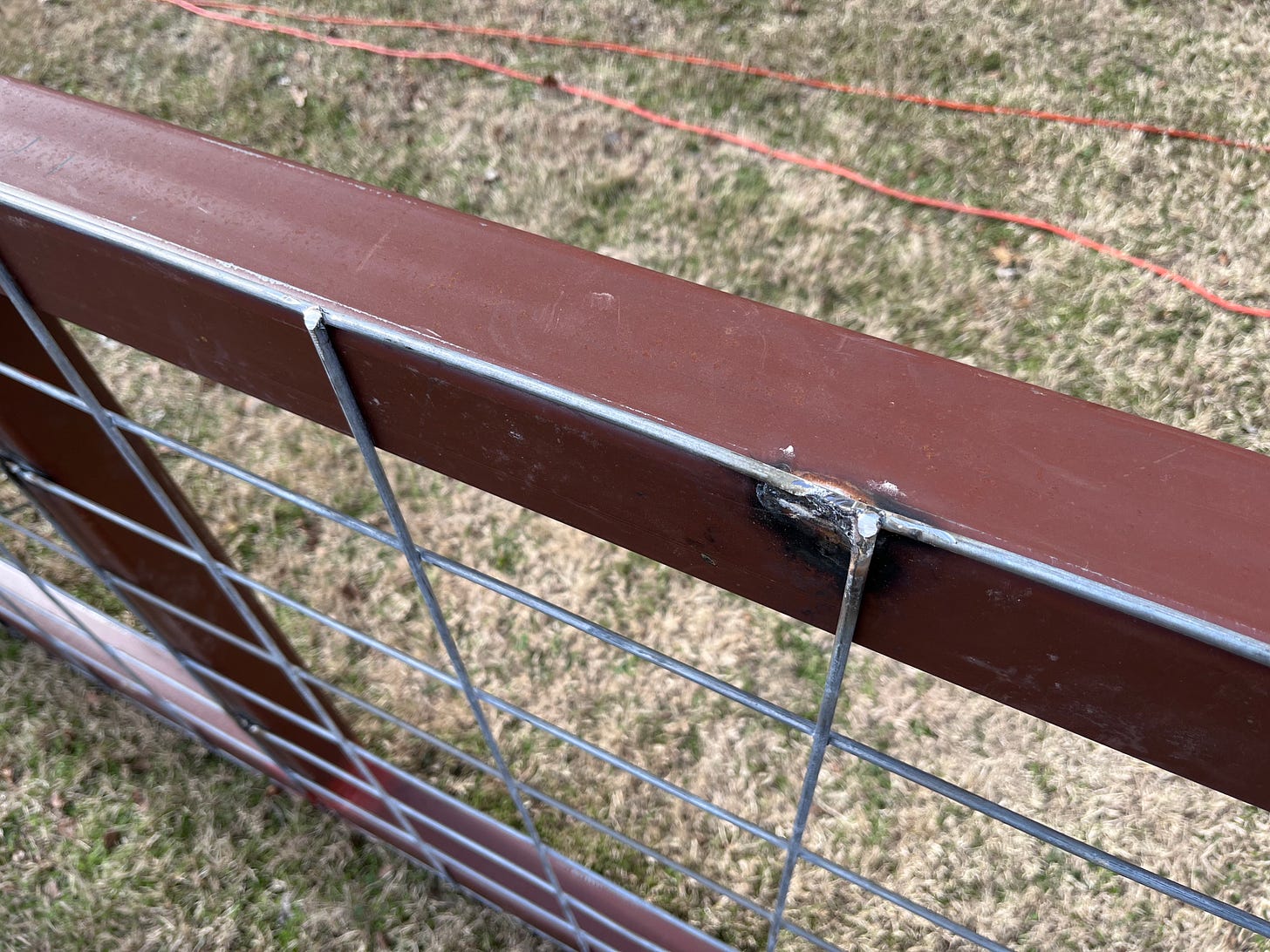
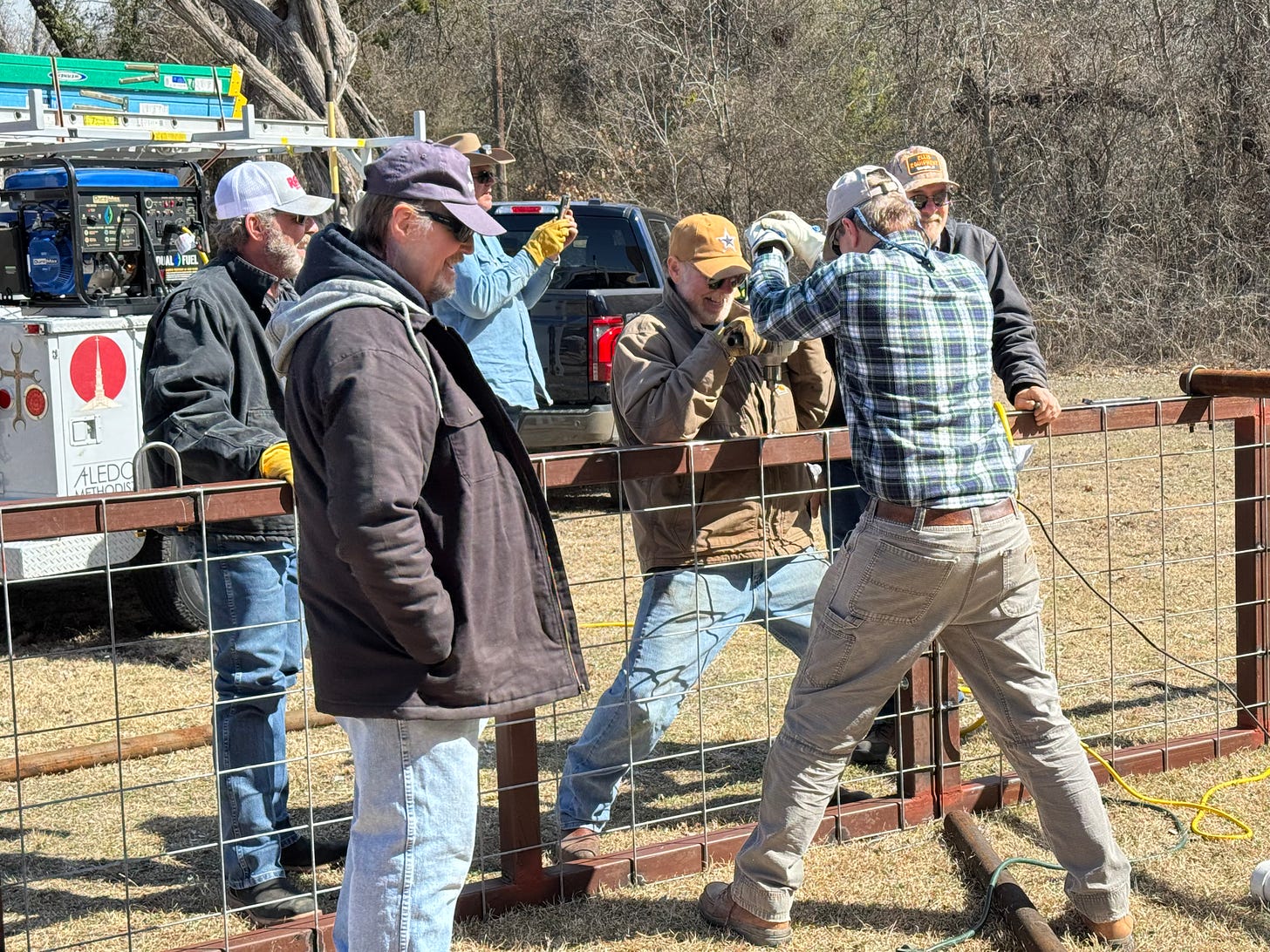
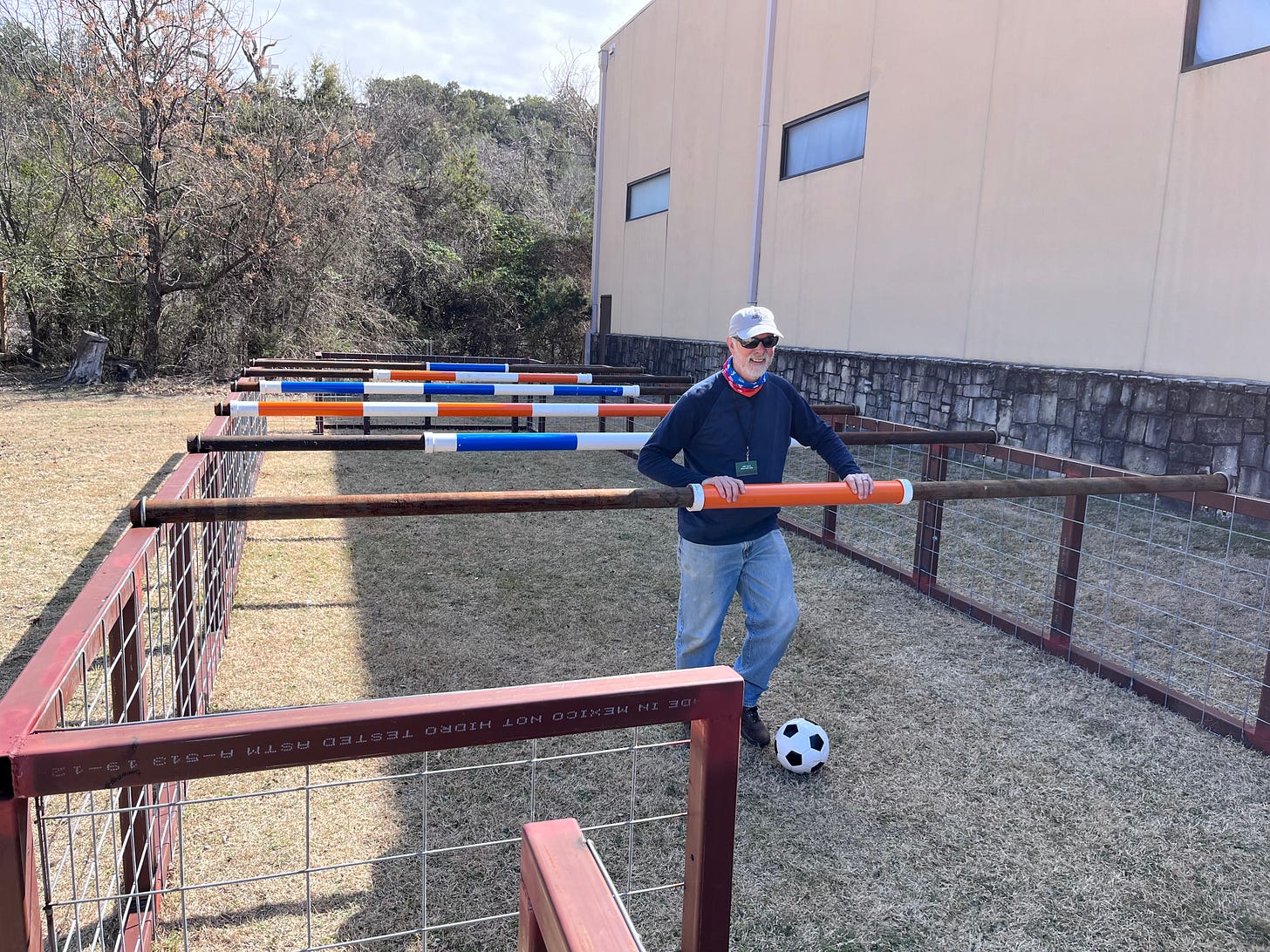
Great job Geoff. Good story, good pics. I'm ready to go back and play.
Hey, we need video of the game